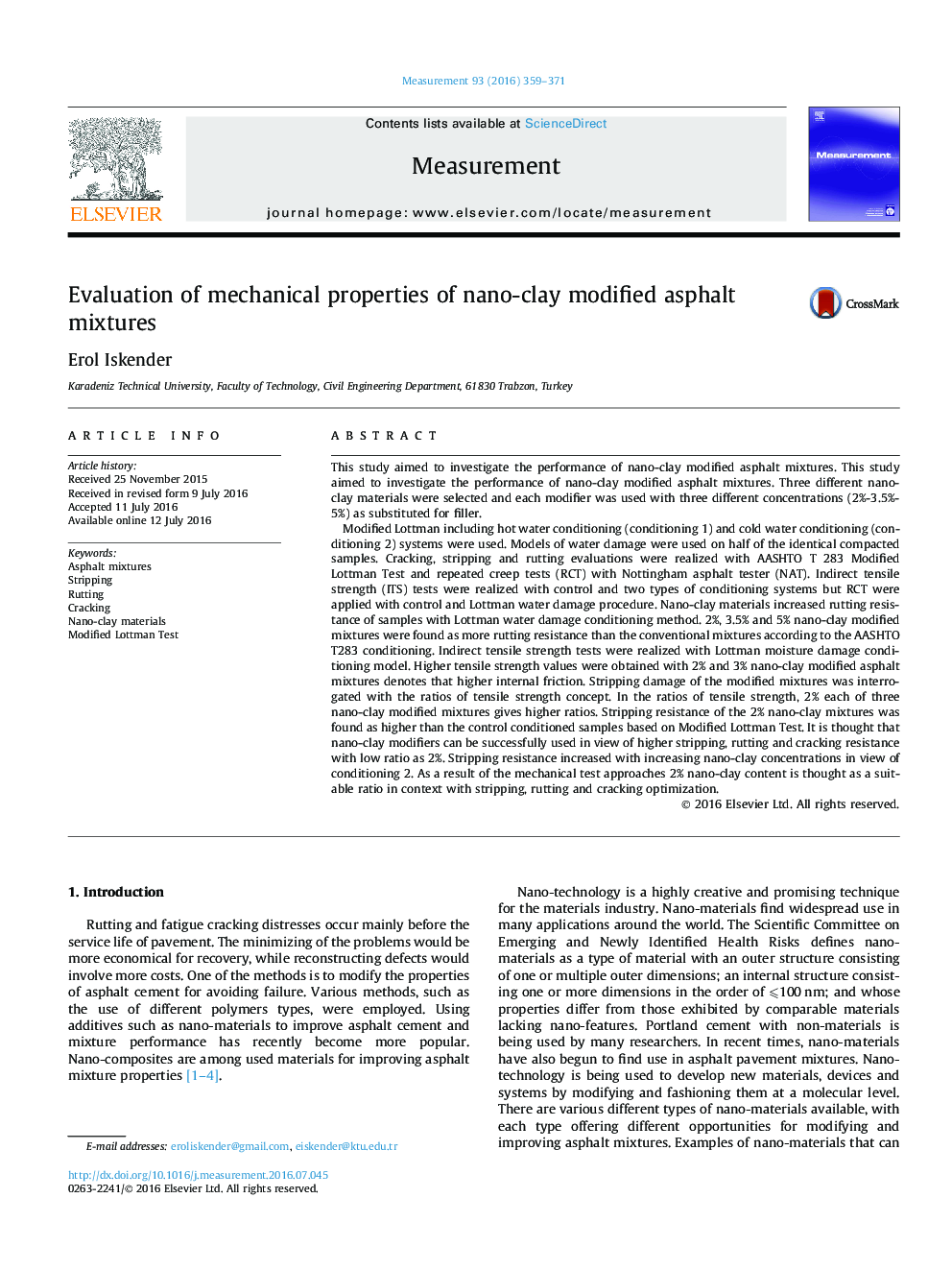| Article ID | Journal | Published Year | Pages | File Type |
|---|---|---|---|---|
| 7122787 | Measurement | 2016 | 13 Pages |
Abstract
Modified Lottman including hot water conditioning (conditioning 1) and cold water conditioning (conditioning 2) systems were used. Models of water damage were used on half of the identical compacted samples. Cracking, stripping and rutting evaluations were realized with AASHTO T 283 Modified Lottman Test and repeated creep tests (RCT) with Nottingham asphalt tester (NAT). Indirect tensile strength (ITS) tests were realized with control and two types of conditioning systems but RCT were applied with control and Lottman water damage procedure. Nano-clay materials increased rutting resistance of samples with Lottman water damage conditioning method. 2%, 3.5% and 5% nano-clay modified mixtures were found as more rutting resistance than the conventional mixtures according to the AASHTO T283 conditioning. Indirect tensile strength tests were realized with Lottman moisture damage conditioning model. Higher tensile strength values were obtained with 2% and 3% nano-clay modified asphalt mixtures denotes that higher internal friction. Stripping damage of the modified mixtures was interrogated with the ratios of tensile strength concept. In the ratios of tensile strength, 2% each of three nano-clay modified mixtures gives higher ratios. Stripping resistance of the 2% nano-clay mixtures was found as higher than the control conditioned samples based on Modified Lottman Test. It is thought that nano-clay modifiers can be successfully used in view of higher stripping, rutting and cracking resistance with low ratio as 2%. Stripping resistance increased with increasing nano-clay concentrations in view of conditioning 2. As a result of the mechanical test approaches 2% nano-clay content is thought as a suitable ratio in context with stripping, rutting and cracking optimization.
Related Topics
Physical Sciences and Engineering
Engineering
Control and Systems Engineering
Authors
Erol Iskender,
